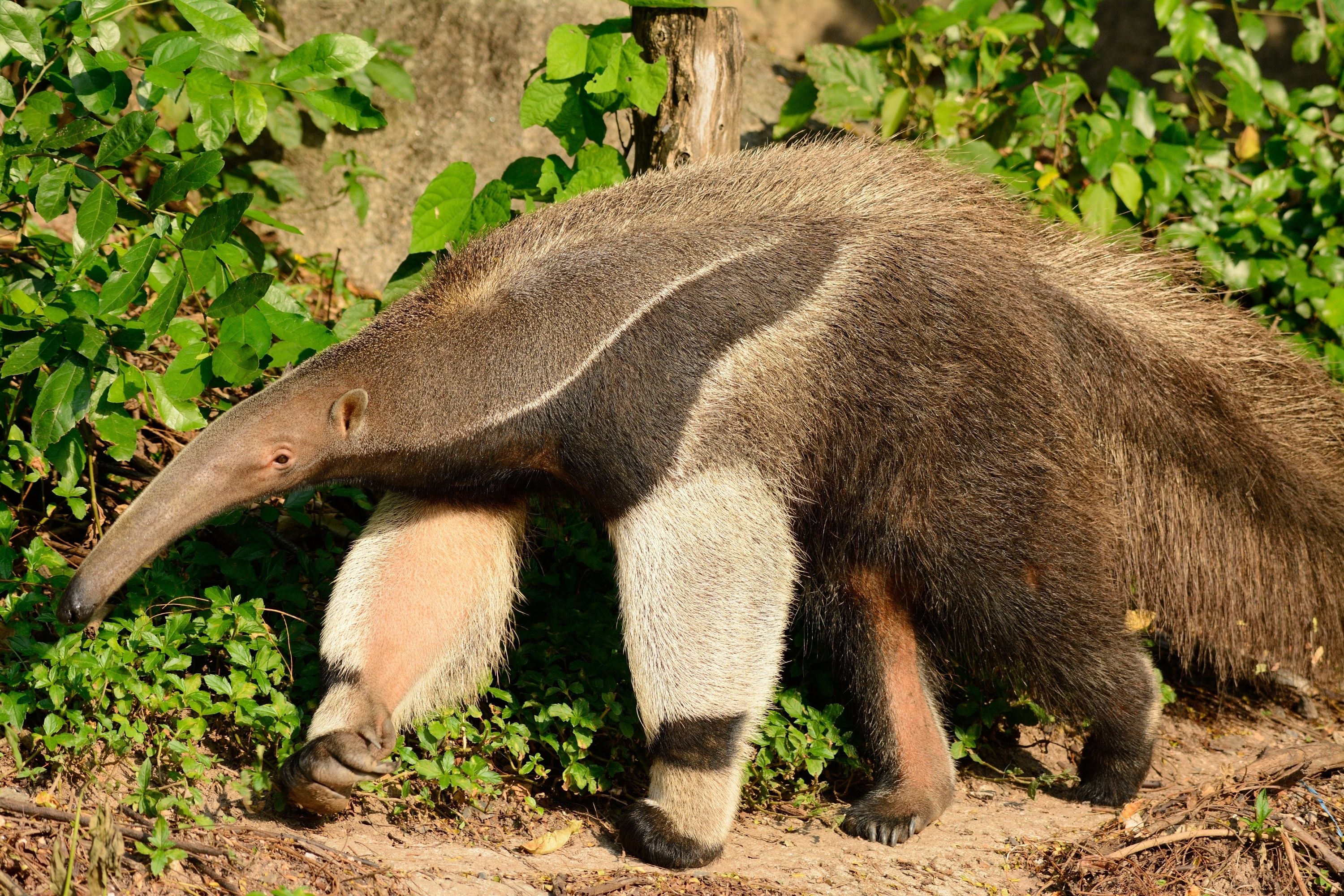Giant anteater
(Myrmecophaga tridactyla)

Description
The giant anteater (Myrmecophaga tridactyla), also known as an ant bear, is an insectivorous mammal native to Central and South America. It is one of four living species of anteaters, the only extant member of the genus Myrmecophaga, and is classified with sloths in the order Pilosa. This species is mostly terrestrial, in contrast to other living anteaters and sloths, which are arboreal or semiarboreal. The giant anteater is the biggest of its family, 182 to 217 cm (5 ft 11+1⁄2 in to 7 ft 1+1⁄2 in) in length, with weights of 33 to 50 kg (73 to 110 lb) for males and 27 to 47 kg (60 to 104 lb) for females. It is recognizable by its elongated snout, bushy tail, long fore claws, and distinctively colored pelage. The giant anteater is found in multiple habitats, including grassland and rainforest. It forages in open areas and rests in more forested habitats. It feeds primarily on ants and termites, using its fore claws to dig them up and its long, sticky tongue to collect them. Though giant anteaters live in overlapping home ranges, they are mostly solitary except during mother-offspring relationships, aggressive interactions between males, and when mating. Mother anteaters carry their offspring on their backs until weaning them. The giant anteater is listed as vulnerable by the International Union for Conservation of Nature. It has been extirpated from many parts of its former range. Threats to its survival include habitat destruction, fire, and poaching for fur and bushmeat, although some anteaters inhabit protected areas. With its distinctive appearance and habits, the anteater has been featured in pre-Columbian myths and folktales, as well as modern popular culture. The giant anteater is native to Central and South America. Its known range stretches from Honduras to northern Argentina, and fossil remains have been found as far north as northwestern Sonora, Mexico. It is largely absent from the Andes and has been fully extirpated in Uruguay, Belize, El Salvador, and Guatemala, as well as in parts of Costa Rica, Brazil, Argentina, and Paraguay.The species is found in a number of habitats including both tropical rainforest and xeric shrubland, provided enough prey is present to sustain it.
Taxonomic tree:







